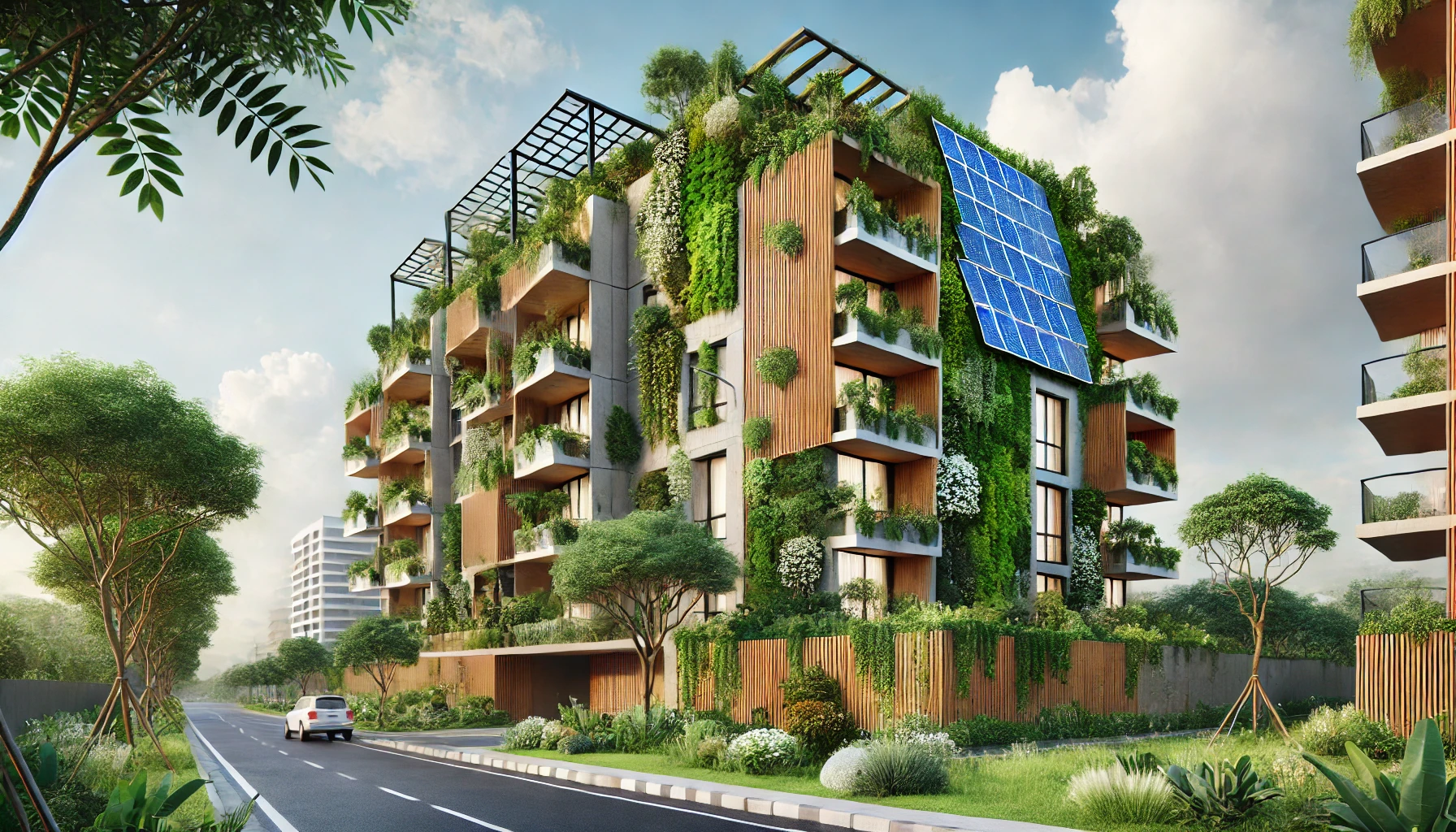The global climate crisis has forced industries to reassess their environmental impact, and few sectors face more scrutiny than real estate. Accounting for a significant percentage of energy consumption and greenhouse gas emissions, the built environment is at the forefront of sustainability efforts. As we move towards a greener future, sustainable real estate practices and frameworks are shaping the way buildings are designed, constructed, and maintained.
In this article, we explore the principles of sustainable real estate, the regulatory frameworks driving change, and the certifications that help define what it means to create and maintain truly sustainable buildings.
Understanding Sustainable Real Estate
At its core, sustainable real estate aims to minimize the environmental impact of buildings while maximizing their social and economic benefits. This approach considers the entire lifecycle of a building—from construction to operation and eventual demolition.
Key principles of sustainable real estate include:
- Environmental Sustainability: Reducing emissions, energy use, and waste; improving resource efficiency; and promoting biodiversity.
- Social Responsibility: Enhancing occupant health and well-being and fostering community engagement.
- Governance: Implementing transparent and responsible management practices that align with environmental and social goals.
These principles are encapsulated in the Environmental, Social, and Governance (ESG) framework, a critical tool for evaluating sustainability in real estate.
Why Sustainability in Real Estate Matters
Buildings are responsible for 40% of total energy consumption and 36% of greenhouse gas emissions in the European Union. With such a significant footprint, improving sustainability in this sector is essential to meeting global climate goals.
The Paris Agreement calls for limiting global warming to 1.5°C above pre-industrial levels, which requires halving emissions by 2030 and achieving net zero by 2050. For real estate, this means focusing on energy efficiency, renewable energy integration, and sustainable material use.
Moreover, research shows that improving existing building stock is often more sustainable than constructing new buildings. Demolishing and rebuilding can take decades to offset the environmental impact, highlighting the importance of retrofitting and sustainable renovation.

Key Regulatory Frameworks
Several regulatory frameworks and directives guide sustainable practices in real estate:
- European Green Deal: This ambitious strategy aims for a carbon-neutral Europe by 2050. It includes the Renovation Wave initiative, which targets energy efficiency improvements in 35 million buildings by 2030.
- EU Taxonomy: A classification system defining sustainable economic activities. For real estate, it outlines criteria for activities like constructing new buildings, renovating existing ones, and managing building energy performance.
- Energy Performance of Buildings Directive (EPBD): Revised in 2024, this directive focuses on decarbonizing building stock and improving energy efficiency.
- Corporate Sustainability Reporting Directive (CSRD): This directive requires companies to report on their sustainability impact, ensuring transparency and accountability.
These frameworks provide a roadmap for aligning real estate operations with climate goals, emphasizing energy efficiency, emissions reduction, and responsible resource use.
Sustainability Certifications
Sustainability certifications offer a standardized way to assess and compare buildings. They serve as benchmarks for environmental performance, guiding property owners and developers toward greener practices. The most notable certifications include:
1. LEED (Leadership in Energy and Environmental Design)
LEED is one of the most widely recognized certifications globally. Administered by the U.S. Green Building Council, it evaluates buildings on criteria like energy use, water efficiency, indoor air quality, and material selection. The LEED Operations and Maintenance certification focuses on existing buildings, encouraging sustainable upgrades and operations.
2. BREEAM (Building Research Establishment Environmental Assessment Method)
Originating in the UK, BREEAM is Europe’s leading certification. It evaluates a building’s lifecycle, from design to operation, and emphasizes categories such as energy efficiency, water management, and occupant health. The BREEAM In-Use standard is particularly relevant for existing buildings.
3. WELL Building Standard
The WELL certification focuses on occupant health and well-being. It assesses factors like air and water quality, lighting, thermal comfort, and mental health considerations. WELL complements environmental certifications by addressing social sustainability.
Frameworks Driving Sustainable Real Estate
Beyond certifications, several frameworks guide sustainability efforts in the real estate sector:
- Science-Based Targets Initiative (SBTi): This framework helps companies set emissions reduction targets aligned with the 1.5°C goal. In 2024, SBTi introduced specific guidelines for the real estate sector, emphasizing both operational and embodied carbon emissions.
- Global Real Estate Sustainability Benchmark (GRESB): GRESB offers ESG performance data and benchmarking for real estate investments. It helps stakeholders identify opportunities for improvement and align with global sustainability goals.
- Carbon Risk Real Estate Monitor (CRREM): CRREM evaluates the carbon intensity of buildings, helping property owners manage stranding risks and align with the Paris Agreement.
Challenges in Achieving Sustainability
While the importance of sustainable real estate is widely acknowledged, several challenges remain:
- High Costs: Retrofitting existing buildings and adopting new technologies can be expensive, deterring some property owners.
- Complex Regulations: Navigating overlapping frameworks and certifications can be daunting, especially for smaller firms.
- Lack of Awareness: Many stakeholders are unaware of the long-term financial and environmental benefits of sustainability measures.
The Future of Sustainable Real Estate
As the industry evolves, new technologies and practices are emerging to support sustainability:
- Smart Building Technologies: IoT devices and advanced energy management systems optimize resource use and reduce emissions.
- Circular Economy Principles: Reusing materials and designing buildings for adaptability and disassembly minimizes waste.
- Green Financing: Sustainable finance instruments, such as green bonds, incentivize investments in eco-friendly projects.
The focus is also shifting toward integrating social and governance factors into sustainability efforts. This holistic approach ensures that buildings not only protect the environment but also enhance quality of life and promote equity.
Conclusion
Sustainable real estate is no longer a choice but a necessity. As climate challenges intensify, the industry must embrace comprehensive sustainability frameworks, adopt rigorous certifications, and overcome financial and regulatory barriers. By prioritizing energy efficiency, social responsibility, and governance, the real estate sector can play a pivotal role in building a greener, more equitable future.
Whether through retrofitting existing buildings or designing new ones, the path to sustainability requires collaboration, innovation, and a steadfast commitment to the planet and its people. Let’s work together to transform the built environment for generations to come.
You can Download the PDF : HERE

